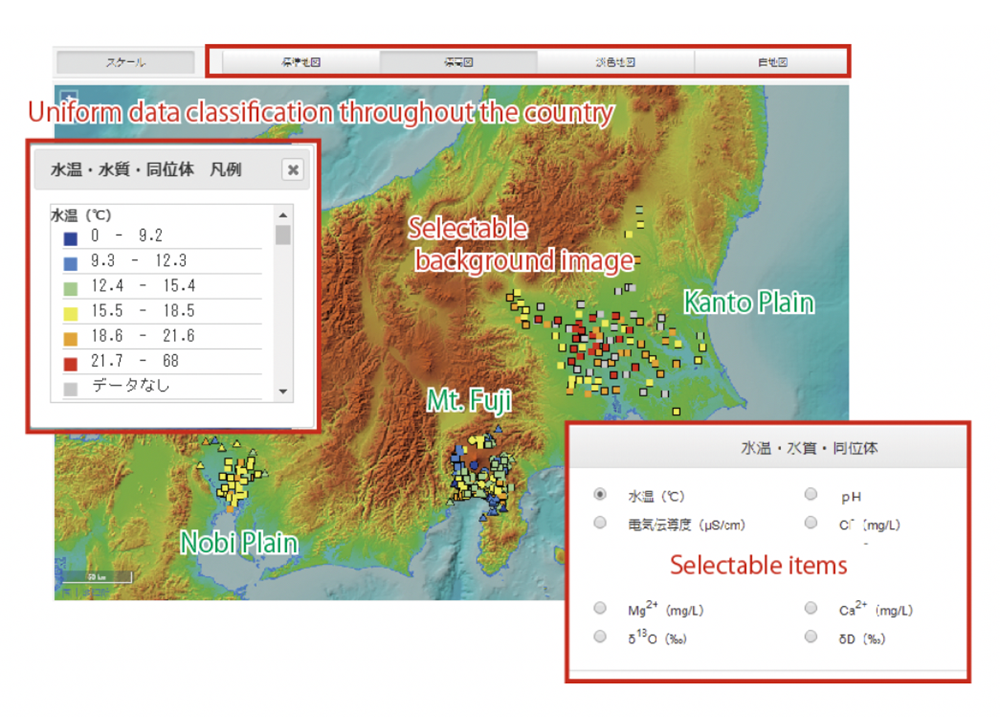Digital hydrogeological maps on the internet
-Easy access to groundwater information-
Summary of AIST Press Release May 31, 2019
>>Japanese
In the 1950s–1970s, industrial over-pumping of groundwater caused many problems in Japan such as land subsidence and sea water intrusion. Due to these problems, groundwater became used less and less. Recently, however, the social circumstances surrounding groundwater has dramatically changed, for example, the demand for bottled groundwater has increased with the spread of household water dispensers and wells are actively installed in large-scale facilities to obtain cheap groundwater for daily operation and to secure emergency water resources. On the other hand, new legislation aimed at the efficient use and conservation of groundwater was enacted in 2014. Therefore, the visualization of groundwater information is an urgent task so as to understand its distribution and movement.
The Geological Survey of Japan has published printed hydrogeological maps since 1957. Since 2002, the Water Environmental Maps have been published in CD-format so that users can overlay arbitral “layered” data on the map and understand the relationship between each hydrogeological feature (Fig. 1). However, browser updates sometimes cause problems in displaying the digital maps. To adapt to browser updates, the web version of the Water Environmental Maps has been released along with the Groundwater Database for Japan (Fig. 2) on May 31, 2019. The database enables users to project each chemical data such as ion distribution on a map with a uniform data classification throughout Japan so that they can understand the hydrogeological difference between regions.
(URL https://gbank.gsj.jp/WaterEnvironmentMap/main.html)
Fig.1 Conceptual image of the Water Environmental Maps
Fig.2 Groundwater database for Japan
Groundwater is a powerful resource for regional economic development, because it not only can easily be extracted from wells but also has many advantages such as good quality, stable temperature, and low cost. The future use of groundwater should be considered more seriously. GSJ contributes to sustainable groundwater use by publishing the Water Environmental Maps on the internet.



